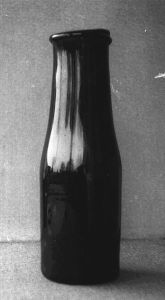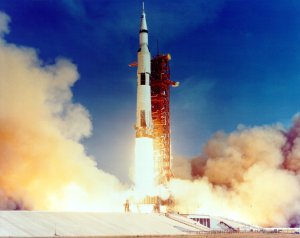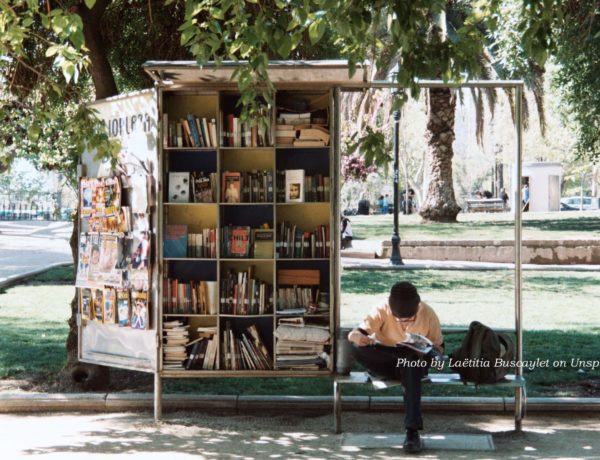Originally published February 9, 2014
A history lesson, courtesy of James Burke, a British science historian. War and the art of destruction is, sadly, one of the largest and most effective generators of innovation. The art of war in Europe had waddled through a number of changes over the centuries and by the time of Napoleon, inventions in armory and developments in strategy had created armies that were quite large. While solving some problems, size created others. Napoleon was nearly stopped in his plans to conquer Europe before he got started. In 1800 he was faced with a large and well trained army of Austrians and was close to losing the battle when one of his divisions came galloping over the hill to save the day. The reason they were not in camp? They were foraging for food. The French were not able to purchase from the locals because French money was worthless; so they had to find it for themselves. Also, a lot of time goes into foraging for large armies that are on the move. Enter the Champagne bottle.
When Napoleon returned to France he set up the Society for the Encouragement of National Industry, which offered prizes for the development of anything that could be commercially exploited. One of these inventions was the use of Champagne bottles to preserve food. A nifty little trick invented by Nicolas Appert. Problem solved. By the time the idea made it to London, Bryan Donkin and John Hall (1810) developed a way of manufacturing tin cans for the new process. Tin cans went everywhere in war and exploration, but, eventually, the inevitable happened. A soldier in the Crimean war opened a can to eat a bit of meat only to find it spoiled. The current canning process included heating the container, but things were a bit foggy on the how hot and how long. In this case the spoilage was blamed on “Bad Air” or swamp air. Off we go on medical explorations of “Bad Air” and its impact on disease.
John Gorrie was a doctor in Florida who dealt with malaria (or yellow fever). He decided the best way to cure his patients was to clear the room of the hot humid air—the swamp air. How does one cool air? There were many starts and stops in this direction. Refrigeration was actually achieved as early as 1748; however it wasn’t until 1844 when Gorrie, using another American’s design (Jacob Perkins) tried very hard to freeze his patients. Sadly, he was not terribly successful in marketing his invention, nor his cure.
Meanwhile, off to Bavaria where Germans were not permitted (by law) to make beer during the summer months. This was because the yeast curing on the bottom of the vat would not cure unless near freezing. What is one to do? Make bigger cooling machines. By using compressed ammonia, the vats could be cooled sufficiently to brew beer all year long. You see, as the container expands, the liquid ammonia grabs energy (heat) from the surrounding air/water and cools it.
This led to work on liquid gases and the discovery that when certain gases are released from a secure container, and given spark, they go boom. But where does one find such a container? In a lunch box. In 1892 Sir James Dewar came up with the ubiquitous thermos bottle. This was basically two flasks, one inside of the other sealed together after evacuating most of the air between the layers. This prevents heat transfer by conduction or convection and preserves, for some period of time, the temperature of the contents. Now, scientists and inventors could experiment with all sorts of forms of liquid gas.
Back to booms. The two most effective gases which, when released in their compressed, liquid form, and mixed during the process of evaporation, are hydrogen and oxygen. Hermann Oberth, a German working for Hitler during World War II, built successfully on the work of Konstantin Tsiolkovsky (1903) and Robert Goddard (1882-1945) and created the V-2 rocket that terrorized the Allies and plagued London with the blitz. But the technology did not stop there.
Oberth continued to develop the use of liquid gas, the process which fueled the rockets when the United States began its race to the moon. It was his technology that sent the Saturn V rockets clawing through the air against the gravity of earth.
From looking for effective ways to feed the armies of the early 1800s to the missiles and moon missions of the 1900s, invention and creativity took one turn after another. Wandering through blind alleys, using incredible breakthroughs as parlor entertainment, misconceptions and a desire for cold beer, and a healthy dose of creativity and ingenuity, landed in the Sea of Tranquility on July 20, 1969.
Creativity, inspiration, the “buzz” of the times, the unbridled exploration of new ideas and processes, no one man (or woman) creates alone. We tend to simplify our history and focus on one figure or moment as a watershed; the precise time when something happened. The more you read the more you begin to realize that the brilliant minds among us are the most adapt at finding patterns in all that went before them and combining that work into the inspiration of the moment. It’s a process I’ll never tire of watching.





No Comments